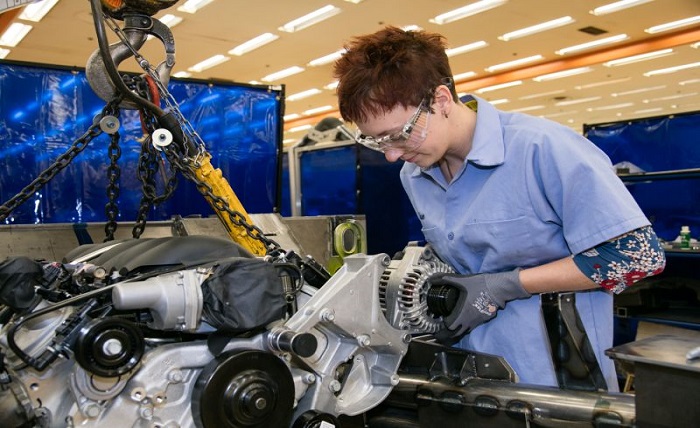In the world of workshops, productivity often hinges on one critical factor—efficient access.
For those who deal with big equipment, from homeowners tackling ambitious DIY projects to construction managers overseeing massive builds, the right setup can transform a workspace.
This guide explores how to enhance workshop productivity by ensuring your space is equipped for seamless access and maneuverability of large machinery.
Understanding the Needs of Your Workshop
When setting up or reconfiguring a workshop, the first step is understanding the specific needs that stem from the types of projects you undertake.
Whether you’re a gardener with heavy tilling machines or a construction manager dealing with industrial-grade equipment, knowing your tools is key.
Consider the dimensions, weight, and unique requirements of each piece of machinery. This understanding will guide decisions about layout, storage solutions, and access points.
Furthermore, identifying bottlenecks and pain points within your current setup is essential. Is there a particular area where equipment frequently jams or gets stuck? Are there spatial constraints hindering the movement of tools? By pinpointing these issues, you can tailor solutions that directly address them, enhancing the overall efficiency of your workshop.
Finally, engage with your team if applicable. Equipment operators often have valuable insights into the day-to-day usability of the workspace. Their firsthand experience can reveal overlooked aspects and inspire innovative solutions for smoother operations.
Designing for Direct and Clear Access
Creating a layout that allows for direct and clear access to equipment is fundamental to workshop productivity. Start by sketching a floor plan, highlighting major pathways and access points. These pathways should be wide enough to accommodate your largest machines, minimizing the risk of collisions and damage.
Consider integrating mobile storage solutions to keep pathways clear. Rolling toolboxes and carts enable flexible organization without obstructing access routes. This dynamic approach also allows for quick reconfiguration of the workshop as project needs evolve.
Incorporate dedicated zones for different types of work. For instance, designate areas for assembly, maintenance, and storage. This organization reduces the time spent searching for tools and creates a logical flow from one stage of a project to the next.
Choosing the Right Entrance Solutions
The entrance to your workshop plays a crucial role in facilitating the movement of large equipment. Depending on your needs, you might consider installing oversized doors or even sectional garage doors. These options provide ample space for machinery to enter and exit without hassle.
For homeowners and businesses located in specific regions, such solutions might require specialized services. For instance, those in Boise might consider seeking garage door repair in Boise to ensure their doors are not only functional but optimized for smooth operation.
Additionally, automated doors can be a game-changer. With sensors and remote controls, equipment operators can easily manage entry and exit, even when hands are full. This upgrade enhances safety by reducing the need for manual handling and opens up possibilities for more advanced security systems.
Lighting and Visibility
Good lighting is vital for both safety and productivity in a workshop. Adequate illumination ensures that operators can see equipment clearly, reducing the risk of accidents. Consider a lighting plan that includes overhead lights, task lighting, and spotlights for specific areas.
LED lights are a popular choice due to their energy efficiency and long lifespan. Position them strategically to eliminate shadows and ensure even lighting across the workspace. Natural light is another excellent resource. If possible, incorporate windows or skylights to maximize daylight, creating a more pleasant and productive environment.
Reflective surfaces can also contribute to better visibility. Use light-colored paints and finishes on walls and floors to help bounce light around the space, further reducing the need for excessive artificial lighting.
Safety Measures for Big Equipment
Safety is non-negotiable in any environment where heavy machinery operates. Implement comprehensive safety protocols and ensure all operators are trained in using the equipment. Regular maintenance checks and inspections are essential to keep machines in top condition and prevent unexpected breakdowns.
Install clear signage to indicate operating zones, emergency exits, and safety equipment locations. These visual cues help maintain order and provide guidance in case of an emergency.
Personal protective equipment (PPE) should be readily available and mandatory for all operators. This includes hard hats, safety goggles, gloves, and hearing protection. By prioritizing safety, you protect not only your team but also your equipment and workflow from costly disruptions.
Efficient Storage Solutions
Storing equipment efficiently is crucial for maintaining a clutter-free workshop and ensuring easy access when needed. Wall-mounted racks and shelves can help capitalize on vertical space, freeing up floor areas for larger machines.
Consider modular storage systems that can be customized to fit various tools and equipment sizes. These systems offer flexibility and scalability, allowing you to adapt to changing storage needs over time.
Additionally, implementing color-coded storage bins can streamline organization, making it easier to find specific tools quickly. Labeling all storage units is a simple yet effective strategy that prevents misplacement and enhances productivity.
Streamlining Processes for Enhanced Workflow
Streamlining processes within your workshop can significantly boost productivity. Start by mapping out your typical workflow and identifying any redundant steps or inefficiencies. By removing unnecessary tasks, you can create a more direct and efficient path from project initiation to completion.
Consider adopting lean methodologies such as 5S (Sort, Set in order, Shine, Standardize, Sustain) to enhance workplace organization and efficiency. This framework encourages continuous improvement and helps maintain a clean, orderly environment conducive to productivity.
Technology can also play a role in streamlining processes. Utilize software tools for project management and time tracking to ensure that tasks are completed efficiently and deadlines are met consistently.
The Role of Technology in Modern Workshops
Incorporating advanced technology into your workshop can revolutionize how you operate. From automated machinery to IoT-enabled devices, these innovations offer unprecedented levels of precision and efficiency.
Consider integrating CNC machines and 3D printers for rapid prototyping and production. These technologies reduce manual labor and increase the accuracy of outputs, allowing you to focus on higher-level tasks.
Smart sensors and data analytics tools can provide real-time insights into equipment performance and usage patterns. This information enables proactive maintenance and informed decision-making, further enhancing productivity.
Building a Collaborative Environment
A collaborative environment fosters creativity and innovation within your workshop. Encourage open communication among team members and provide spaces for brainstorming and idea sharing.
Regular team meetings and feedback sessions can help identify areas for improvement and recognize individual contributions. This inclusive approach boosts morale and motivates operators to find new ways to enhance productivity.
Investing in team-building activities outside the workshop can also strengthen relationships and create a sense of camaraderie, ultimately benefiting the overall workflow.
Adapting to Evolving Needs
The needs of a workshop are not static. They evolve as projects change and technology advances. Therefore, adaptability is a key trait of a productive workshop.
Regularly assess your setup and processes to identify areas that require adjustment. Be open to experimenting with new ideas and solutions, even if they deviate from traditional practices.
Stay informed about industry trends and developments to remain competitive. By being proactive and adaptable, your workshop can continue to thrive and deliver exceptional results.
Enhancing workshop productivity through efficient access to big equipment is not just about organization—it’s about creating a cohesive and dynamic environment that empowers operators to perform at their best. By understanding your needs, optimizing access points, ensuring safety, and leveraging technology, you can transform your workshop into a hub of efficiency and innovation.
For those seeking tailored solutions, consulting with professionals in garage door repair in Boise or similar services can offer valuable insights and enhancements. Remember, a well-designed workshop is more than just a space; it’s a foundation for success.






